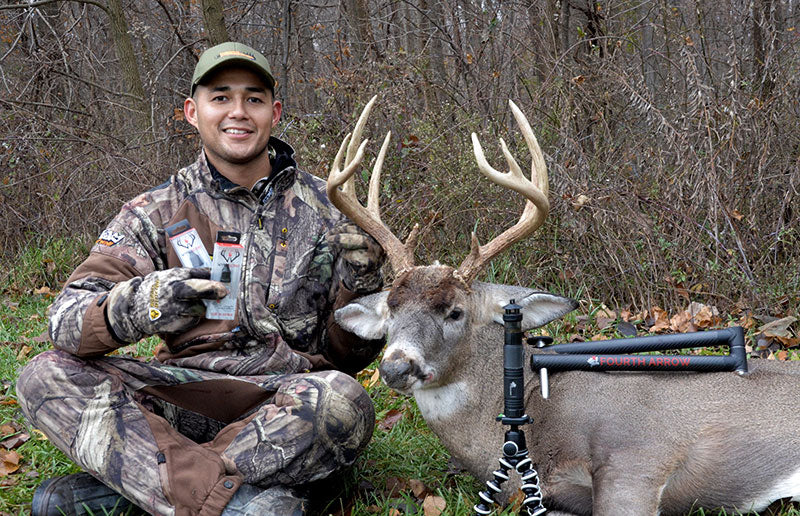
Travel Corridors: Learn to Beat Deer at Their Own Game
By Pro Staffer- John Ruiz, Jr.
What are travel corridors? Where are these high traffic travel areas located? What is a pinch point, and what causes deer to use these travel areas? These are common questions that every hunter will encounter at some point in their hunting career. The answer to these questions can be found through years worth of experience on your own hunting properties. I’ll address these questions and give you some insight from my own experiences in the timber.
Travel Routes
There are many lessons to learn in the whitetail woods. One of the most important strategies to decipher is learning your property’s travel routes. This one thing can instantly keep you in the game. Sometimes just seeing a deer can be the difference between becoming a hunter for life and just another check on the bucket list. Nobody really enjoys not seeing deer during a hunt, especially the young hunter, our future generational conservationists. Yes, there is more to hunting than harvesting an animal and seeing deer, but seeing them consistently will keep you in the field more often. To see more deer, you must think like a deer and figure out where they move in their environment.
Locate Bedding, Food, and Cover
The game animals on your property consistently travel from bedding, to cover, to food and back. Your property will likely have several bedding areas. It will also contain different food sources such as acorns, row crops, or man-made food plots. Take a walk on your property and mentally mark these bedding areas and food sources. Get on Google maps or Google Earth and click through layering filters. That will help you read the flow of your land, see the high and low points, and locate these food- to- bed areas easily. This will intern give you the best idea of how the deer travel through your property. Learning how to read topographic maps will teach you the flow of your property, but it can also teach you how to do the same thing on an out-of-state lease. It will also help you see if that outfitter you’ve been thinking about booking has some good land or if it’s worth the price tag. Figuring out how to decipher this puzzle will put you in the best spot on the property before you ever set one foot on the dirt.

Learn Their Roads
So what are travel corridors? They are simply routes that game animals use to maneuver around your property. These game animals are masters of their environment, and you are the student. They have spent their entire life on this property and know how to move, when to move, where to move, so it’s your job to try and beat them at their own game.

The Road Less Traveled By
Where are these travel areas located? They are typically located between bedding, thick cover, and food. They are also located between water holes, streams, and rivers. They can be easy to spot. Many times heavy tracks, or a well worn down trail will show you how they are moving. However, it is much more difficult to locate a big buck’s travel corridor. He often uses the path less traveled by, slipping in and out of edge cover. He will use a trail high upon the ridge, or zigs and zags through thick cover. He will also use a tall agricultural field to give you the slip when you least expect it.
Pinch Points
What is a pinch point? A pinch point is where two or more varied terrain elements converge together. This is typically a very high traffic hub that the deer will use for communication purposes. If you’ve found one of these, you’re in the right spot to hang a stand. Pinch points are a hunter’s best friend, especially during the rut when the big boys are on the move seeking those receptive does. A great pinch point example would be where a hard bend in a river or stream occur, making a natural funnel to cross. Where a fence row meets another fence row, causing the deer to flow in a specific way, or where several rolling hills meet. These are all excellent pinch point areas.

Figure Out Their Game
Finally, what causes deer to use the travel routes? Deer primarily are creatures of habit. They listen to their bodies like you and I do. When they are hungry, they travel to food. When they are thirsty, they hit the water hole. When they want to feel safe, they creep through thick cover. Keep a keen eye open for these trails, and over the years you will have figured out their game.
